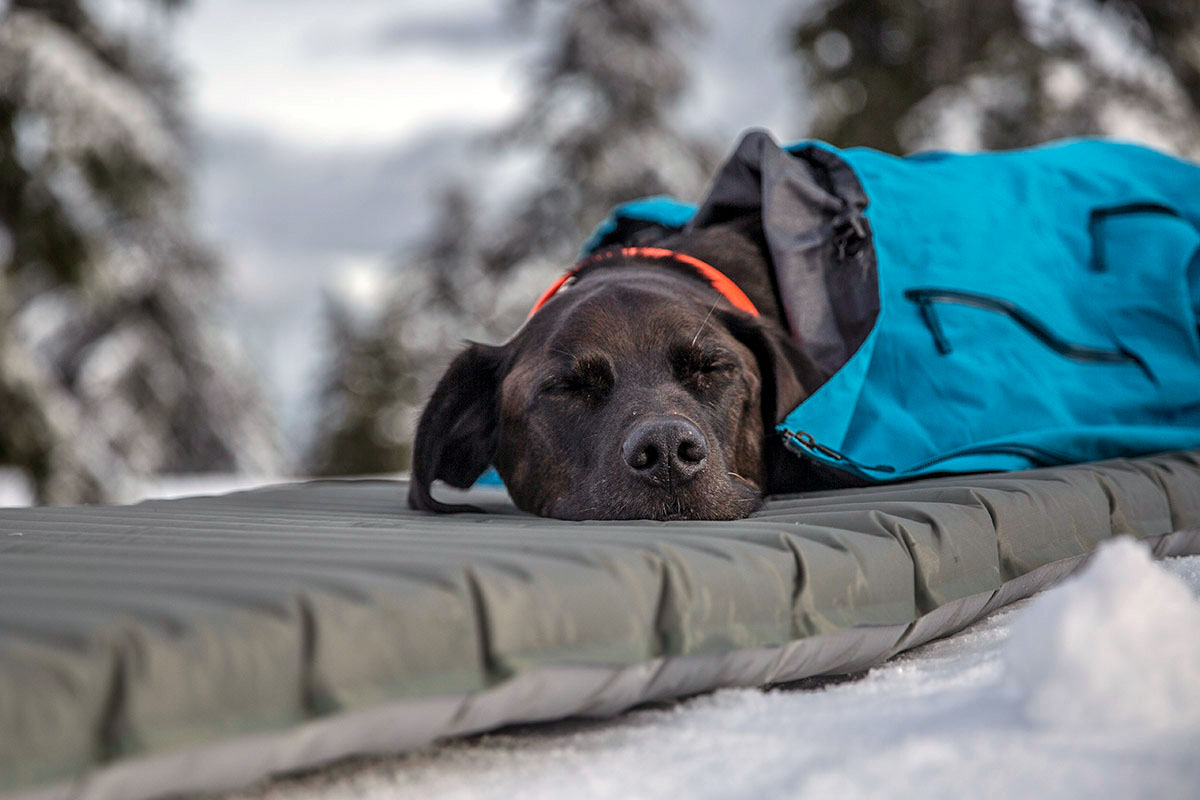
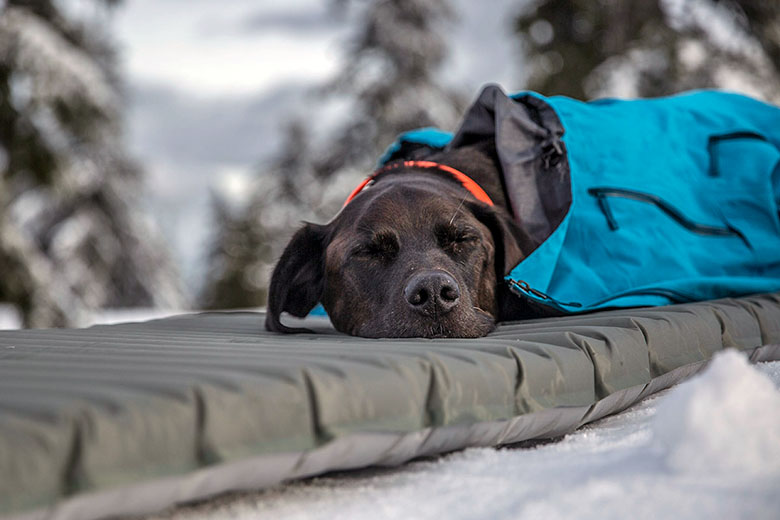
The sleeping pad you bring on an expedition can be the difference between a comfortable outing in nature and a sleepless night spent tossing and turning. But how do you decide which pad to buy and how much warmth you’ll need? Looking at R-value is a great place to start. A measurement of thermal efficiency, R-value is the best indication we have of a pad’s ability to insulate but can unfortunately be quite cryptic and confusing. To help with your decision, below we answer many common questions about R-value and provide recommendations based on our experiences with leading pads on the market. For a full list of options, see our articles on the best backpacking sleeping pads and the best camping mattresses.
Editor's note: We updated this article on June 3, 2024, to revise our backpacking pad comparison chart, include our top sleeping pad and camping mat recommendations, and ensure all information is up-to-date.
If you were to lie directly on the ground while camping, you would quickly get cold due to the heat transfer from your warm body to the cold ground. Even a sleeping bag would not be an effective barrier, as your body would be compressing its synthetic or down insulation. Thus, sleeping pads serve as the protective layer between you and the ground—and they do so to varying degrees depending on thickness, insulation, and more. The pad’s level of insulation is denoted by its R-value.
.jpg)
Technically speaking, R-value measures how well an object resists (hence the “R”) heat. It's worth noting that this measurement isn’t only used on sleeping pads—it quantifies thermal resistance in windows, housing insulation, and much more. The higher the R-value of a sleeping pad, the greater it will resist heat transfer and keep you insulated from the ground. R-values for sleeping pads usually range from around 1 to 7, while thicker and less portable camping mattresses can creep into the double digits (but these have limited appeal for most backpackers). Keep in mind that this is a standalone rating system, meaning that R-value numbers have no correspondence to temperature.
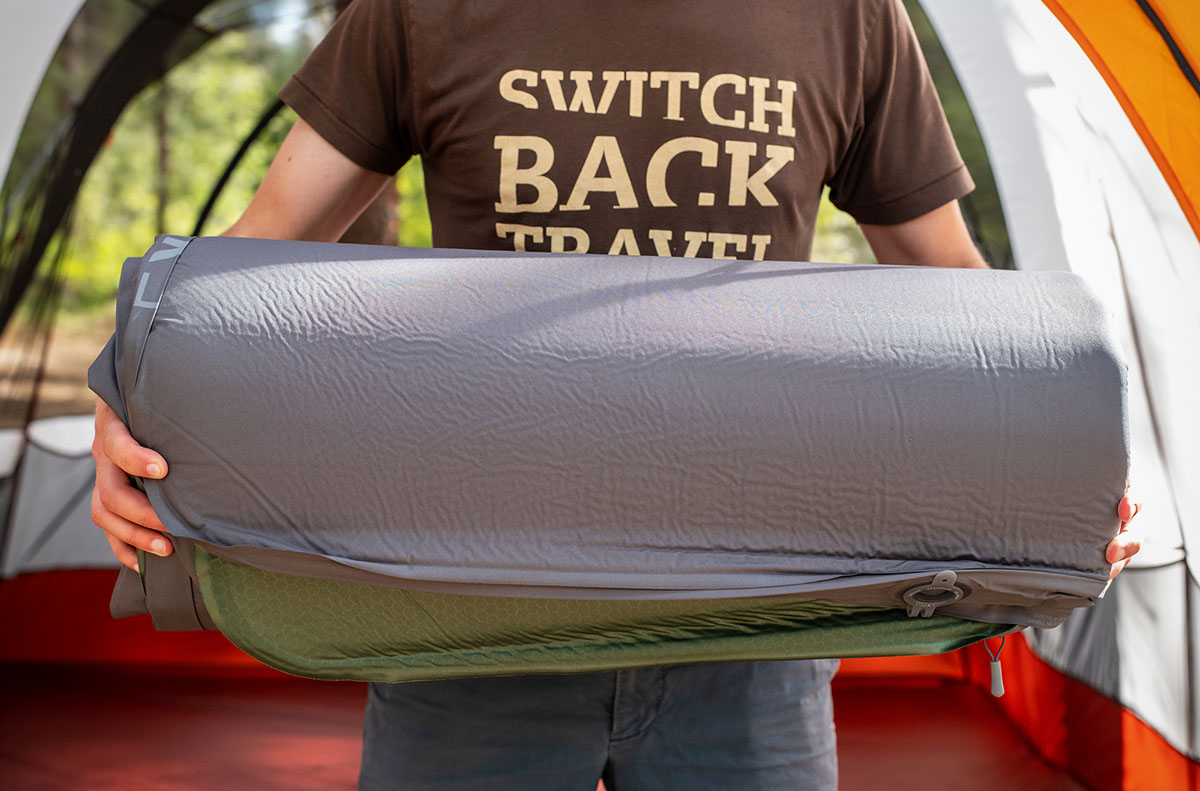
R-values can be tricky to interpret as they have no natural relation to temperature. Additionally, there are many other factors at play when it comes to your comfort, including the warmth of your sleeping bag, your metabolism (do you run hot or cold?), your sleeping position, the weather (is it wet or windy?), and more. Because it can be difficult to state with confidence which R-value is right for which temperature, we'll speak in generalities—and it never hurts to be conservative. Below, we list the three major seasons, giving the lower limits of each range for those looking for the lightest and most packable option. If you're not limited in terms of space, weight, or price, consider opting for a higher R-value (unlike a too-warm sleeping bag, you're unlikely to overheat due to a high-R-value pad). The chart below provides examples of backpacking pads in each range.
| Backpacking Sleeping Pad | Price | Pad Type | R-Value | Season(s) |
|---|---|---|---|---|
| Nemo Switchback | $60 | Foam | 2.0 | Summer |
| Therm-a-Rest Z Lite Sol | $60 | Foam | 2.0 | Summer |
| Therm-a-Rest NeoAir UberLite | $230 | Air pad | 2.3 | Summer |
| Exped Dura 3R | $140 | Air pad | 2.9 | 3-season |
| Nemo Tensor Trail | $180 | Air pad | 2.8 | 3-season |
| Sea to Summit Ultralight Insulated | $179 | Air pad | 3.1 | 3-season |
| Therm-a-Rest Trail Scout | $75 | Self-inflating | 3.1 | 3-season |
| Therm-a-Rest ProLite Plus | $125 | Self-inflating | 3.2 | 3-season |
| Nemo Flyer | $140 | Self-inflating/air | 3.3 | 3-season |
| Nemo Quasar 3D | $160 | Air pad | 3.3 | 3-season |
| Sea to Summit Comfort Light Insulated | $199 | Air pad | 3.7 | 3-season |
| Therm-a-Rest NeoAir Topo Luxe | $180 | Air pad | 3.7 | 3-season |
| Rab Stratosphere 4 | $140 | Air pad | 3.8 | 3-season |
| Therm-a-Rest ProLite Apex | $135 | Self-inflating | 3.8 | 3-season |
| Big Agnes Divide Insulated | $130 | Air pad | 4.0 | 3-season |
| Sea to Summit Comfort Plus SI | $179 | Self-inflating | 4.1 | 3-season |
| Sea to Summit Ether Light XR | $199 | Air pad | 4.1 | 3-season |
| REI Co-op AirRail Plus | $115 | Self-inflating/air | 4.2 | 3-season |
| Big Agnes Boundary Deluxe Insulated | $180 | Air pad | 4.3 | 3-season |
| Big Agnes Zoom UL Insulated | $180 | Air pad | 4.3 | 3-season |
| Therm-a-Rest Trail Pro | $160 | Self-inflating | 4.4 | 3-season |
| Therm-a-Rest NeoAir XLite NXT | $210 | Air pad | 4.5 | 3-season |
| Big Agnes Rapide SL Insulated | $160 | Air pad | 4.8 | 3-season |
| Exped Ultra 5R | $160 | Air pad | 4.8 | 3-season |
| REI Co-op Helix Insulated | $169 | Air pad | 4.9 | 4-season |
| Nemo Tensor All-Season | $200 | Air pad | 5.4 | 4-season |
| REI Co-op Trailmade | $90 | Self-inflating | 5.5 | 4-season |
| Exped Ultra 7R | $220 | Air pad | 7.1 | 4-season |
| Therm-a-Rest NeoAir XTherm NXT | $240 | Air pad | 7.3 | 4-season |
| Exped Dura 8R | $250 | Air pad | 7.8 | 4-season |
| Nemo Tensor Extreme Conditions | $250 | Air pad | 8.5 | 4-season |
As we mentioned above, a few other factors will help dictate which R-value you need, including your sleeping position and surface. Sleeping on your back more evenly distributes your weight, while side sleepers might not get the most out of their pad’s R-value (if this sounds like you, a substantial, thick pad like the Sea to Summit Ether Light XR Insulated is a good option). In terms of sleeping on snow—a question we often receive—you don’t necessarily need a warmer pad. Snow is a very poor conductor, and bedding down on the white stuff can actually be a lot warmer than sleeping on dirt or rock in the winter. That said, it’s a good idea for all cold-weather camping to pair your air or self-inflating pad with a foam mattress for extra assurance in case of a leak. And the good news is that R-values are additive, so you get increased warmth when you stack multiple pads.
.jpg)
Up until 2020, there was no standardization for how companies measured R-value. Therm-a-Rest and Sea to Summit, for example, had their own testing facilities, while brands like Exped used third-party researchers to do the testing for them. And some companies merely estimated their R-values. As a result, one brand’s 3.2 might have been another brand’s 4.5—meaning there was no way to compare pads with any accuracy. Further, some manufacturers (notable companies include Big Agnes and Nemo) forewent the R-value rating entirely, opting for temperature ratings instead.
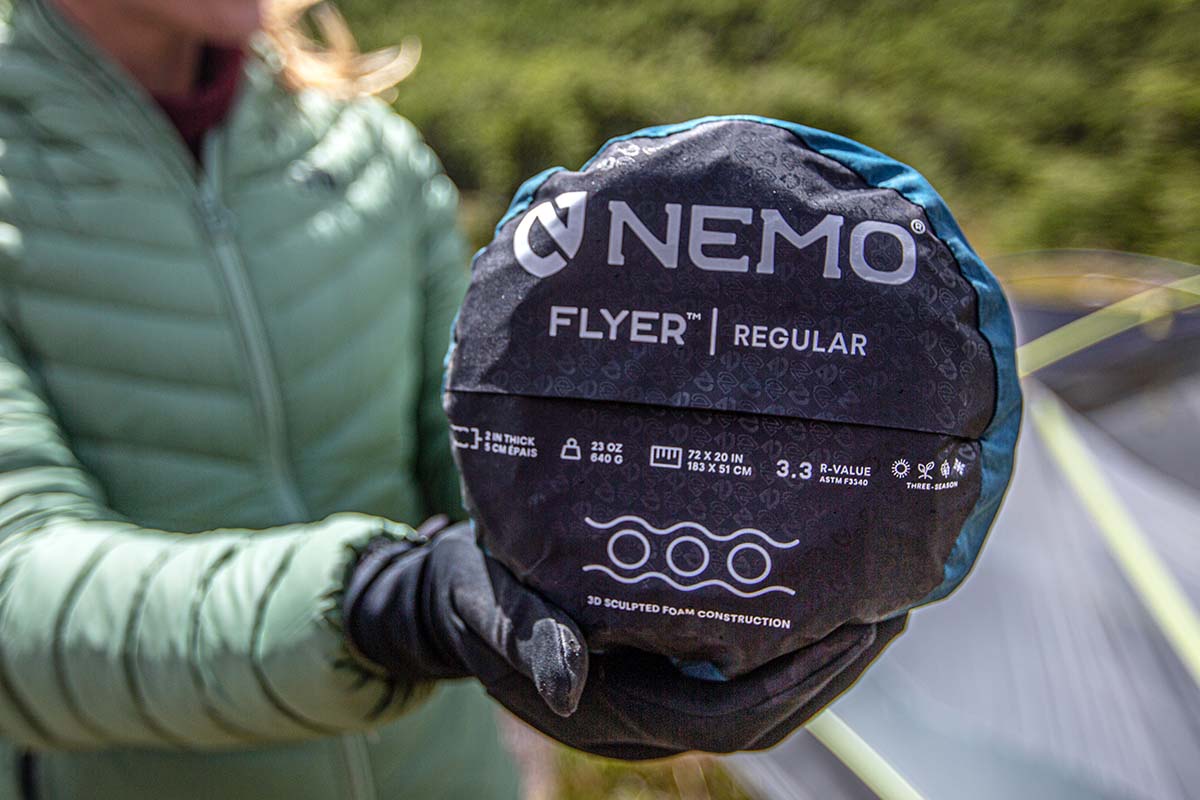
The good news: That all changed in 2020. Thanks to Therm-a-Rest, REI, and MEC (Canada’s gear cooperative), there is now a standard for R-values, set in place by ASTM International (a global testing body). Similar to the ISO/EN rating for sleeping bags, the goal is to allow consumers to compare a variety of pads like-for-like. REI and MEC now require that every pad they carry (which accounts for a large portion of the market) has an ASTM R-value, making ratings much more accurate and dependable across the board.
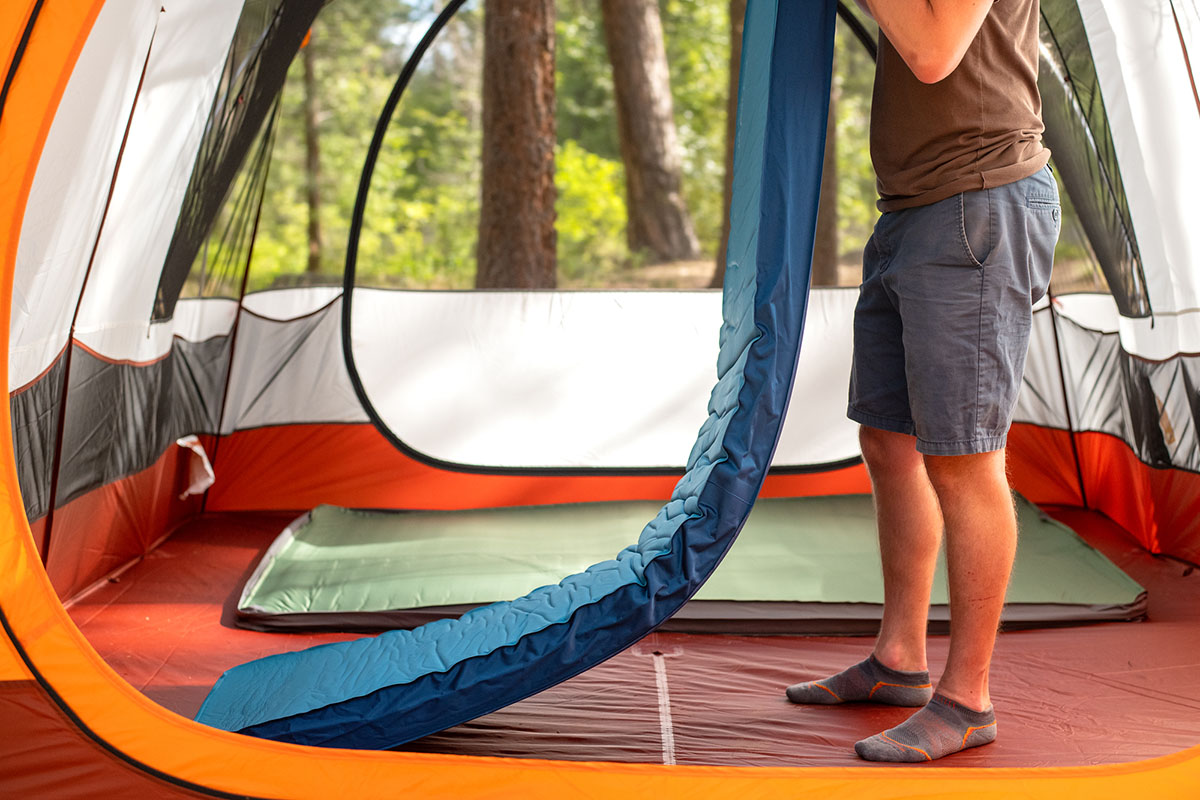
Thanks to the ASTM standard, we can now be assured that each pad we compare while shopping undergoes the same rigorous and standardized testing. In this testing, pads are sandwiched between a hot plate on top, which mimics the body, and a cold plate underneath, mimicking the ground. Over the course of four hours, testers measure how much energy the top plate uses in order to stay at a consistent 35 degrees. The less energy it takes, the more insulative the pad. The more energy it takes, the less insulative the pad.
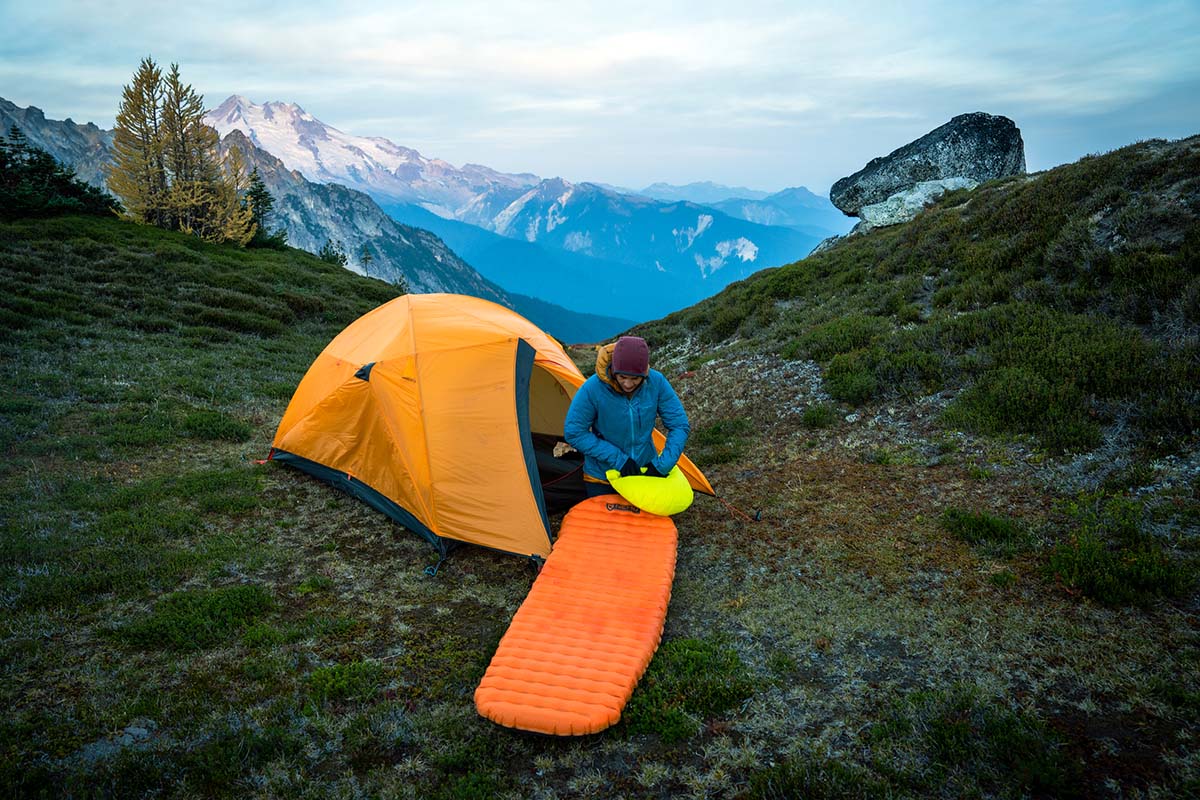
Having a sleeping pad with a higher R-value than you need certainly won’t hurt, but it will almost always come with a weight penalty and price increase. This will likely be an issue for ounce-counting ultralighters and even for the everyday backpacker on longer trips where weight can add up quickly. For example, the Exped Dura 8R with a winter-ready R-value of 7.8 comes in at 2 pounds 1 ounce (for the medium size) and costs a pricey $250, while the Therm-a-Rest NeoAir XLite NXT (R-value: 4.5)—which will suffice for most 3-season trips—shaves off 1 pound 4 ounces and $40. And keep in mind that you can always use a layered setup—a 3-season air pad and a lightweight closed-cell foam pad, for example—which lends versatility in addition to warmth. But in the end, if you don’t mind the added weight or cost, a sleeping pad with a higher R-value is certainly a nice piece of gear to own.
.jpg)
When choosing a sleeping pad, you should factor in the sleeping bag you’ll be using, too. The two work as a system, and if you buy a bag without focusing on the temperature rating or a pad without considering the R-value, you won’t be maximizing their potential. When we go backpacking, we think of our sleeping bag and pad as one unit by taking into account both the sleeping bag rating and pad R-value. In fact, Therm-a-Rest designers claim that you actually need a pad with an R-value of at least 4.0 to maximize your sleeping bag’s temperature rating. In other words, if your sleeping bag is rated to 20 degrees Fahrenheit, you need a pad with an R-value of 4.0 or higher in order to be comfortable at 20 degrees. And of course, it’s always important to factor in the type of backpacking tent and the layers you’ll be wearing to bed, too.
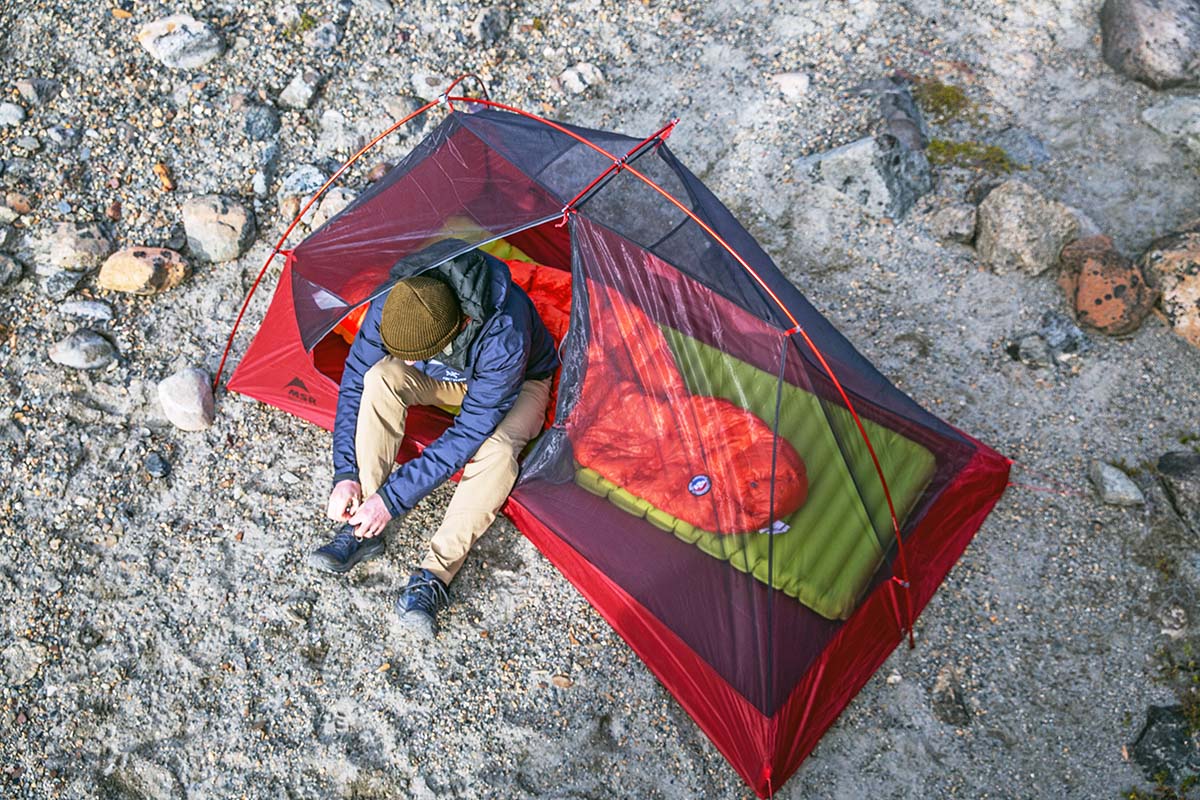
If you’d still like a little help narrowing down your selection, below are our team’s current favorite backpacking and camping sleeping pads broken down by category, from light and packable air pads for minimalists to luxurious self-inflating designs for comfort-seekers. For a wider look at the market and detailed buying advice to help you choose the right pad, check our articles on the best backpacking sleeping pads and best camping mattresses.
Best Overall: Therm-a-Rest NeoAir XLite NXT
A Close Second (With a Better Pump Sack): Nemo Tensor All-Season
Most Comfortable for Side Sleepers: Sea to Summit Ether Light XR
Best Budget Air Pad: Big Agnes Divide Insulated
Best Crossover Pad for Backpacking and Camping: Nemo Quasar 3D
Best Self-Inflating Pad: Therm-a-Rest ProLite Plus
Best for Cold Weather: Therm-a-Rest NeoAir XTherm NXT
Best Foam Sleeping Pad: Nemo Switchback
Best Overall: Therm-a-Rest MondoKing 3D
Most Comfortable Camping Mat for Two: Exped MegaMat Duo 10
Best Budget Camping Mattress: Sea to Summit Camp SI Mat
Best Light and Packable Air Mat: Nemo Quasar 3D
See the Best Backpacking Sleeping Pads See the Best Camping Mattresses and Pads